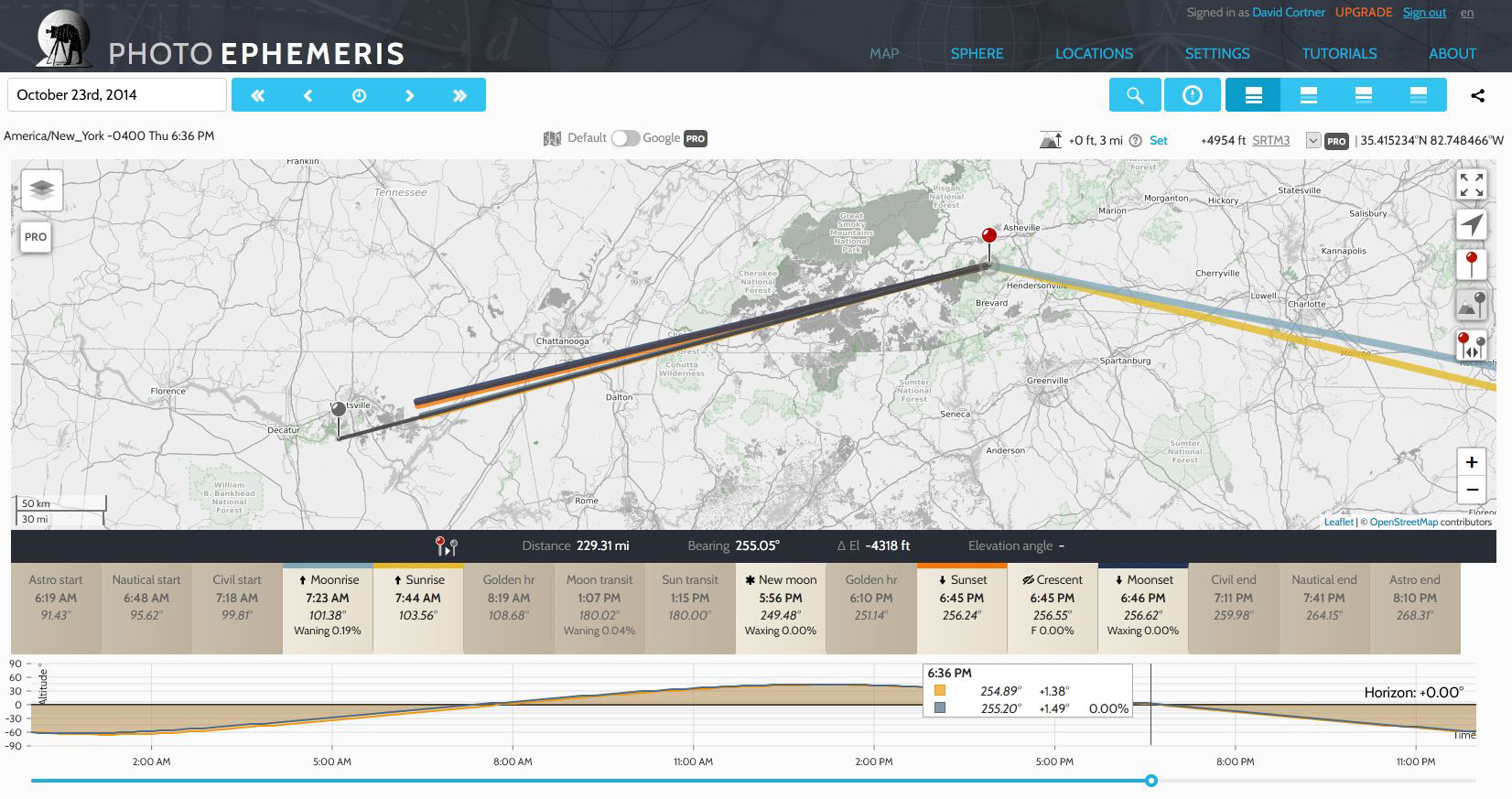10/24/2014. Me and My Baby View the Eclipse. Apologies to Lee Smith for borrowing her title for this post. Amy and I took the RV and the dogs up to the Mount Pisgah campground for the night. I hoped to find a good overlook for yesterday's eclipse. It was a partial eclipse, not particularly deep, but near maximum at sunset. That suggested there might be something well worth photographing. I needed a low western horizon; I wanted a distant ridge line and interesting clouds. Didn't we find just the spot at the Buck Spring Gap overlook! Here's the "money shot" grabbed just a couple of minutes before sunset:

Solar Eclipse
Buck Spring Gap Overlook, Blue Ridge Parkway
Mount Pisgah, North Carolina
October 23, 2014
Questar 3.5 / Canon 6D
Make that image as large as you can ("view image") and note the aircraft to the lower left of the Sun at the top of the dark clouds. It's just beginning to underline the eclipse with its contrail. I didn't see it until I was reviewing my photos. If anybody wants to try to determine what flight that is, how far away, etc., here are the circumstances of the photo:
Lat: 35.4151
Long: -82.7485
Alt: 4,980 feet
Time: 18:35:59 EDT on October 23, 2014.
Geometric altitude of the center of the Sun (uncorrected for refraction): 1.06 degrees
Azimuth: 254.84 degrees
Here are the circumstances of this photo as depicted in The Photographer's Ephemeris (click the image to read details):

The grey pin is set at a distance of 229.3 miles from the home (red) pin, the distance from which an airplane at 30,000 feet would be on the nominal horizon from a viewpoint 4,953 feet above sea level. There are too many simplifying assumptions to think that that is the actual distance to that aircraft (exact angular elevations and atmospheric refraction, for example, are ignored). The grey pin is in the vicinity of Hunstville, Alabama. The aircraft measures 10 pixels long at this resampled scale, or 1/74 of the width of the whole frame which is (from measurement of the Sun's size) about 48 minutes of arc wide. Call it 50 minutes wide and 1/75 of the frame width, so 50*60 = 3000 arc seconds wide, and 3000/75 = 40 arc seconds. At 229 miles, if the plane is crossing the line of sight at right angles, that implies a length from nose to tail of about 230 feet. A Boeing 737 is 110 feet long; a 747 is 225; an Airbus 380 is 262. So we're in the right range, but 737's and MD-80's (138 feet) are way more common in domestic service, so let's go with a length of about 125 feet which suggests an actual range of just over half of 229 miles. Let's call it 120 miles and good enough, which puts that aircraft northbound near Dalton, Georgia, approaching Cleveland, Tennessee. An analysis of the elevation and refraction etc, might move it farther out and suggest it is something larger. This is left as an exercise for the reader.